Edmonton Transit then and now – 95th St
In this then and now post (we do a lot of them) we look at three old photos contributed by a reader showing some Edmonton Transit trolley buses in service. Our goal is to revisit those locations to see what they look like today. In spite of the forty five years that separate the two sets of images, surprisingly, very little has changed in that time. Much of what was seen in the “then” photo appears the “now”. Except for the trolley buses of course, and they are long gone.
In the first image we see an ETS trolley heading south down 95th St in 1969 – all the old photos were taken along that same roadway and are from that same year. The bus, #131, was built in 1945 by Canadian Car and Foundry under license from the Brill Division of American Car and Foundry. It is a model T44 (Trolley – 44 passengers) and was one of over seventy CC&F trolley buses on the ETS roster (comprising models T44, T48 and T48A, all of which were for the most part visually identical). Most were acquired new in the years 1945 to 1954. A few however were bought second hand from Regina and Vancouver and two more similar TC44 models were bought brand new from the States.
The CC&F “trackless trolleys” would be retired en-masse in the late 1970s. It’s not known how many made it to the end, but certainly major failures took their toll over the years and many may have been removed from service before that time. Still more may have been used as parts supplies to keep others running. The Brills, as they were call, were replaced by newer Flyer models and later a hundred Brown Boveris buses built using GMC New Look (aka Fishbowl) shells.
Canadian Car and Foundry had a factory in Fort William Ontario (now Thunder Bay) where the buses were made. The company also made gas and diesel buses, but Edmonton never ordered the latter, only trolleys and gas powered buses were purchased. That factory is still in business, now owned by Bombardier, and it makes transit and passenger rail cars. The last buses, back when it was still CC&F, were made in the early 1960s.
Looking at both pictures some things have changed and others not. The building on the right for example is instantly recognizable and helps connect the two sets of images across time. In 1969 the building was home to a drug store.
The destination sign and placard on the bus, hard to see unless you blow the image up, shows it’s on the #5 route. The bus would eventually find its way downtown before heading west. Then it would turn around and retrace its steps.
Seen heading away is a 1969 Buick LeSabre.
Not seen in either image is Norwood School, a very photogenic building and the subject of its own report (link below). Your author was a student there, in the early 1970s, and I recall seeing the trolleys passing by. Once memory that sticks in my mind…due to road work, one small section of power line had to be removed and to help get the buses past that gap a special truck with a huge rubber bumper would push them along until they were under the wires again. Without power, the buses could not move – modern trolley buses like those in Vancouver have battery packs that allow them to span gaps in the line caused by construction and the like. Not these ones though.
Heading north up 95th St, a block or so, we find our next position. The old shot shows some houses in behind and in no time, we find them. Not much has changed, except for the trees, which have become huge since the first photo was taken. One house still has what looks to be the same awnings.
The bus, #148, was like the others mentioned earlier, built in 1945. ETS ordered twenty one CC&F trolleys that year and we’ll seen three of them in this report. This old timer has been preserved and was until recently used for special runs and charters. Since the wires have come down though, it’s not known what the future has in store for this old veteran. It no longer has a place to run. Another CC&F Brill trolley, #202 from 1954, has also been preserved.
This bus appears to have a #3 route sign in the window (quite hard to see) and is heading south. Along here that route and the #5 route travelled this same section of road for few blocks.
While shooting, we were lucky enough to catch a passing bus, #4812, a New Flyer model D40LFR built in 2009 (the most common bus in ETS service today). The destination sign says its a #5 bus which follows the old trolley bus route for much of its trip. An even earlier tracked trolley also travelled up 95th St and I believe even back then it was referred to as the #5 route. That’s quite a legacy!
Moving north again, we find our final position. The bus in the old picture obscures many of the houses in behind, but with a bit of work, we find the spot. The roof lines are distinctive enough that we know we are where we need to be, And as in the previous two sets, not much is different between the then and now images.
The trolley seen in this final “then” shot, #146, was also from that 1945 order that the other two buses came from. The destination sign and placard, both only visible when the photo is enlarged, tells us it’s on the #3 route.
Seen in behind the bus is a couple interesting vehicles, a late 1960s Chevrolet pickup along with what appears to be a early 1960s Pontiac in behind (a Ventura maybe?). That last one is hard to tell though, since even with the image blown up, the car is hard to see
A curious cat watched us as we shot our last photo.
Edmonton’s trolley bus system dates from 1939 and was closed in 2009 (sad). This made it the second last such system in Canada, and only Vancouver is left. Their system, always the largest in Canada, is quite modern and appears to have a solid future. At one time many other cities in Canada had trolley bus systems but most were gone by the 1970s. A few places in the US still run them too. They do offer some distinct advantages, especially in communities where cheap hydro power can be sourced, like in Vancouver.
Many trolley bus systems came about for a couple reasons. First, the transit system could reuse much of old tracked trolley infrastructure (electrical stations, lines, poles) and second, at the time they were introduced diesels were still not terribly reliable nor powerful enough.
Prior to the arrival of the CC&F buses, staring in the mid 1940s, Edmonton’s fleet was made up of buses from Mack, Pullman and Leyland in the UK. All these were retired early on.
The older images are from scanned slides courtesy of the Stephen Scalzo Collection and are used with permission. They are a bit scratched up and such, not surprising given their age.
While shooting our photos, we also took time out to explore a very photogenic school nearby…
Edmonton then and now – Norwood School.
If you like buses, be sure and check out this report…
Calgary Transit then and now – 14th St SW trolley bus.
They live! Calgary Transit GMC Fishbowls in 2013.
If you’d like to know more about what you’ve seen here, by all means contact us!
Date: January, 2014.
Location: Edmonton, AB.
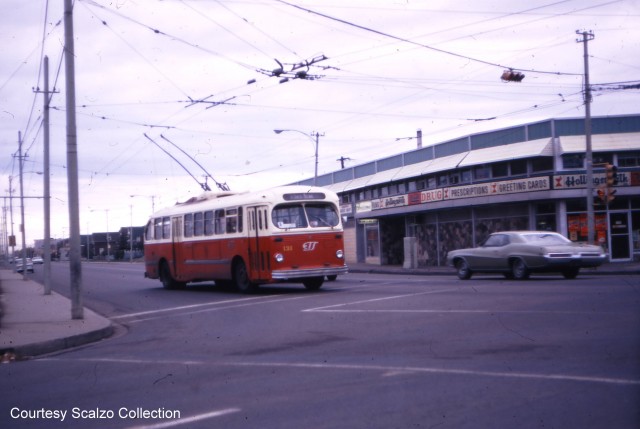
An Edmonton Transit trolley bus heading down 95th St. Courtesy Scalzo Collection.
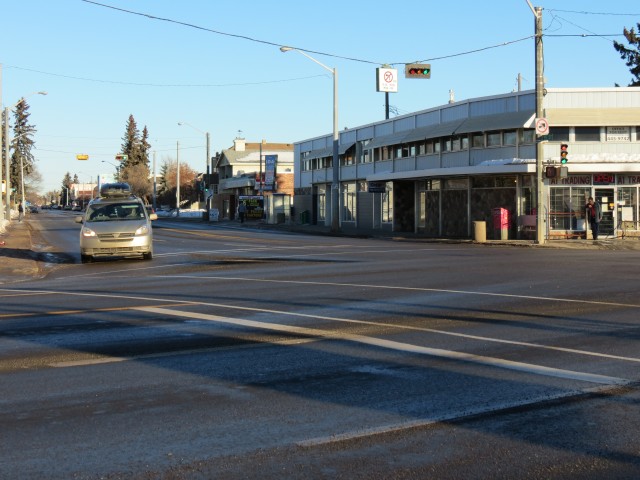
The same location today…
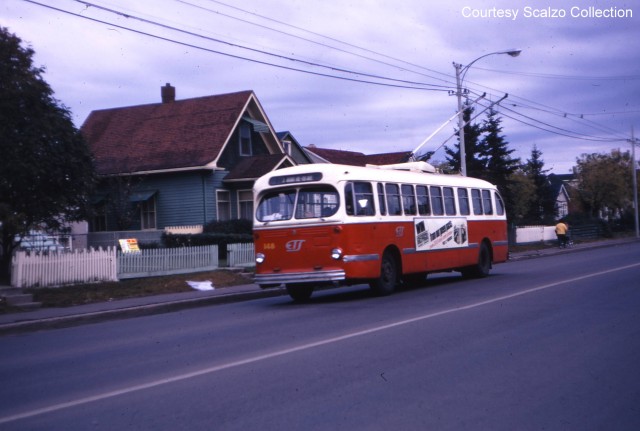
Further up 95th, another ETS trolley bus passes. Courtesy Scalzo Collection.
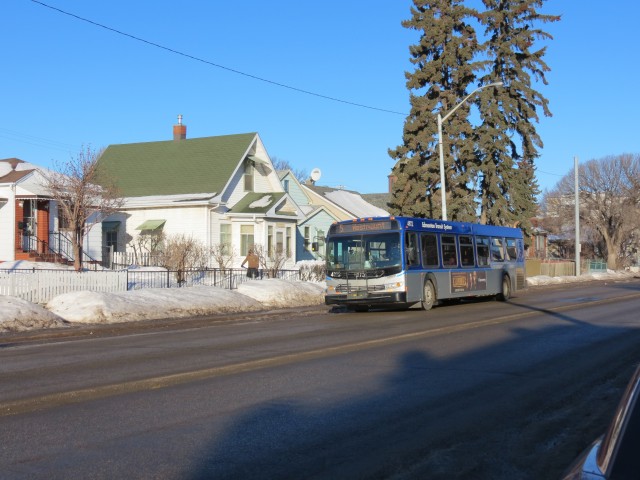
The one house seen in both shots confirms we found the what we were looking for.
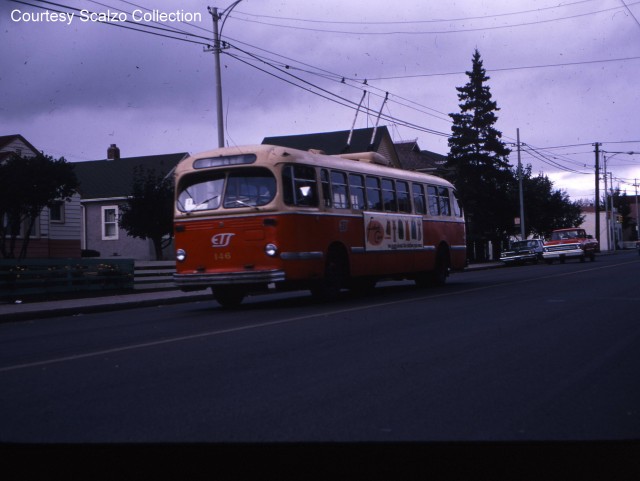
This will be a hard one since so little is seen in behind. Courtesy Scalzo Collection.
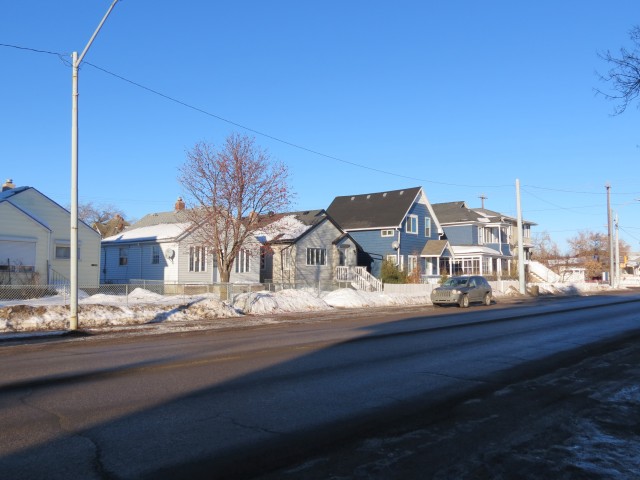
We found the spot – the roof lines prove that.
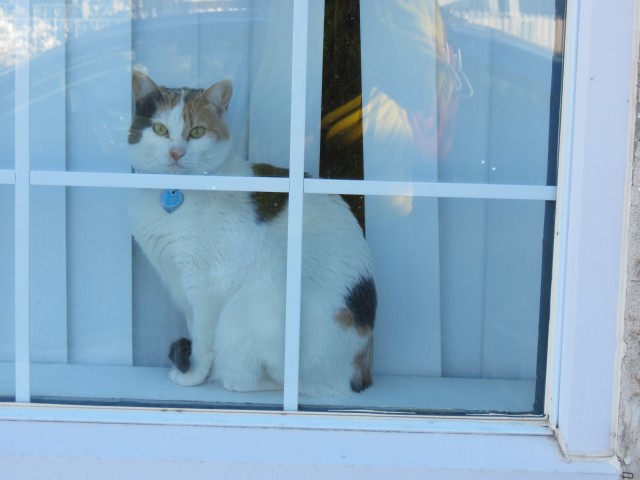
This curious cat kept an eye on us as we shot.

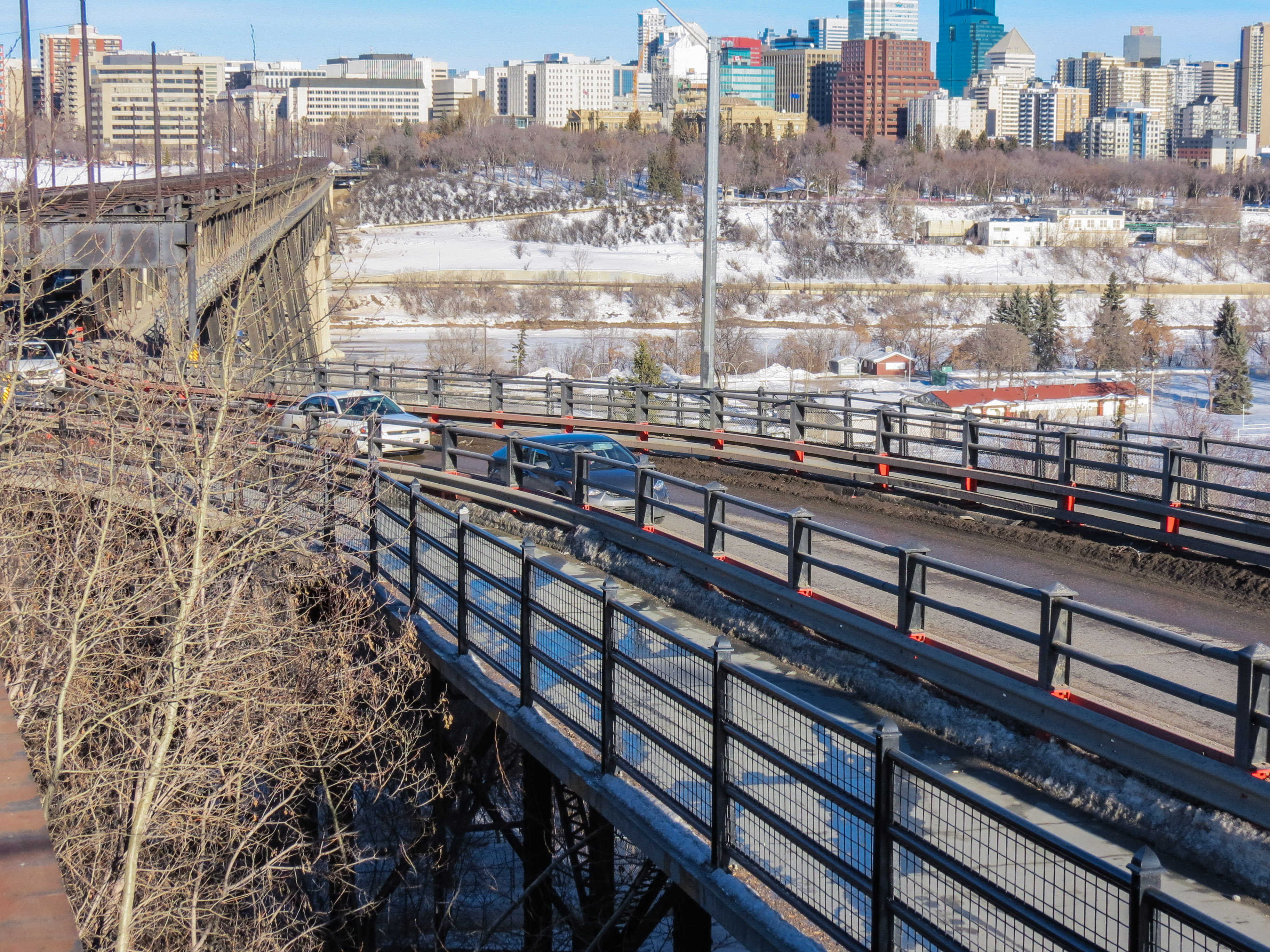
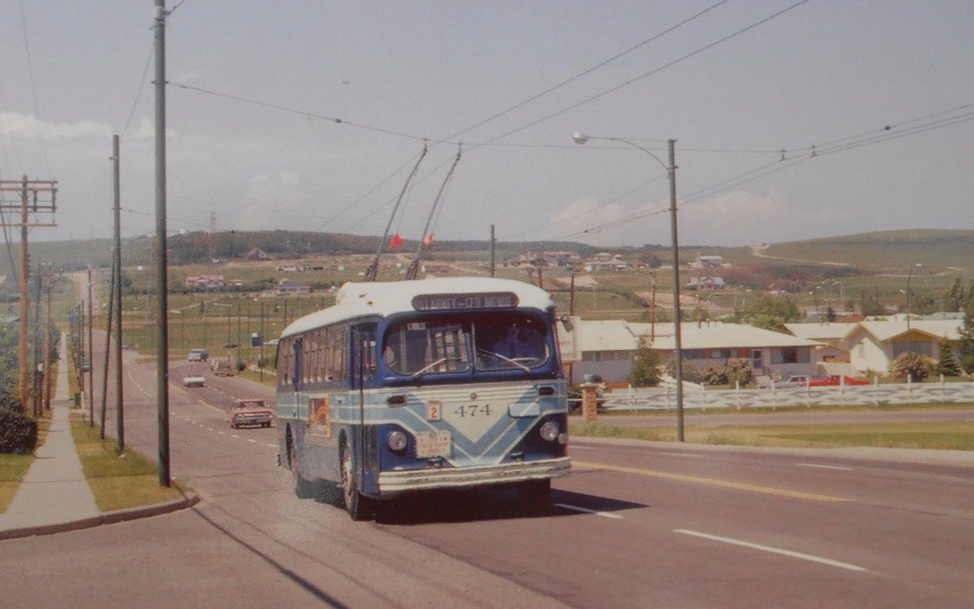
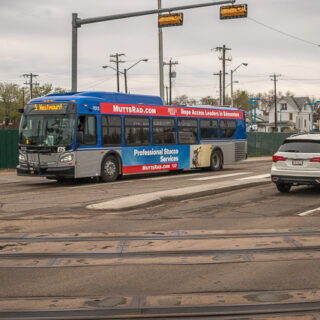
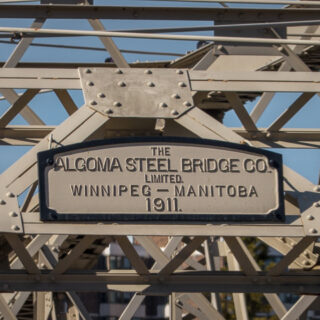
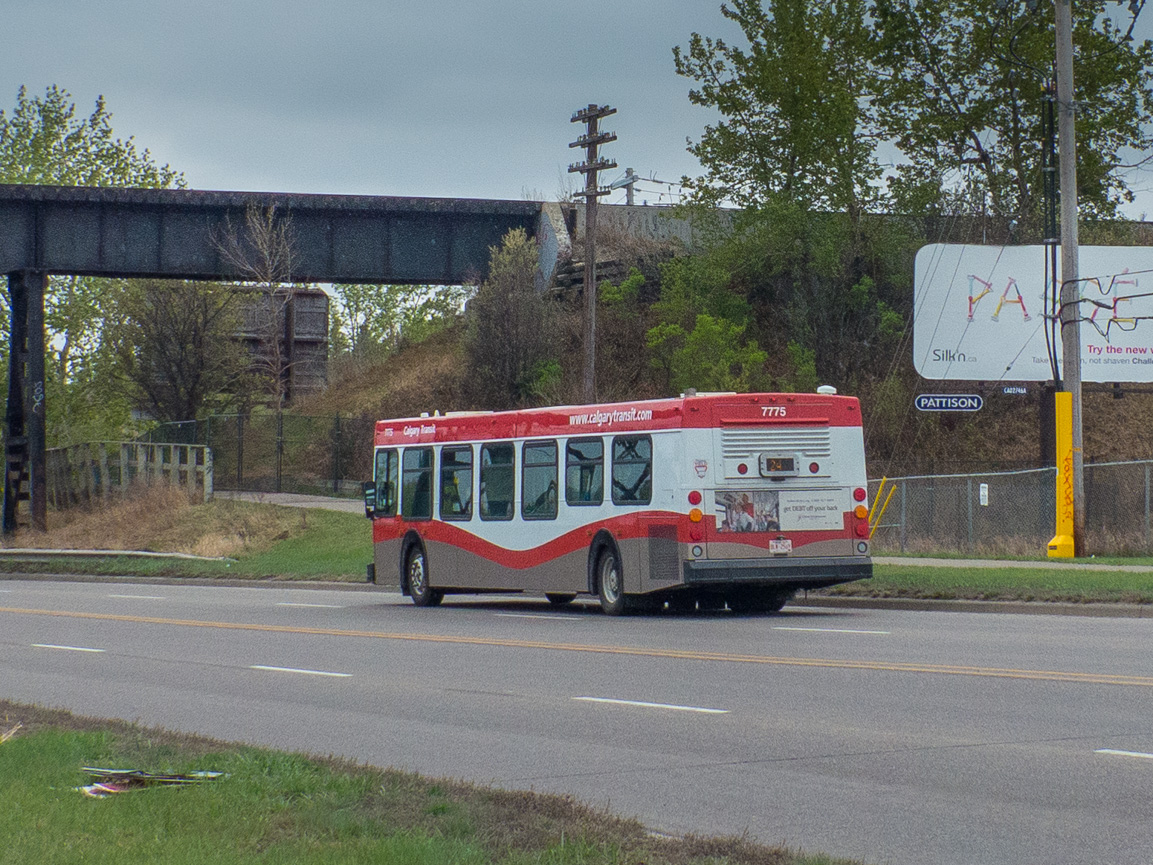
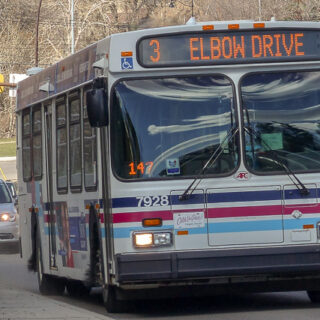
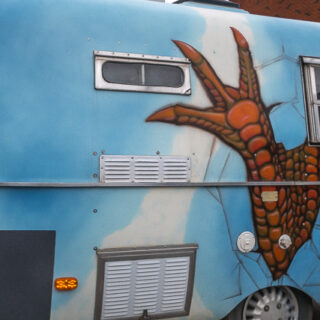
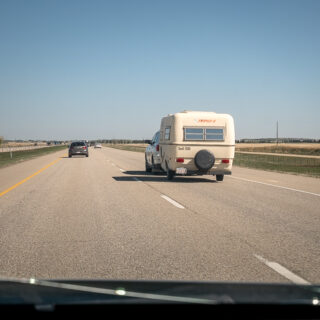
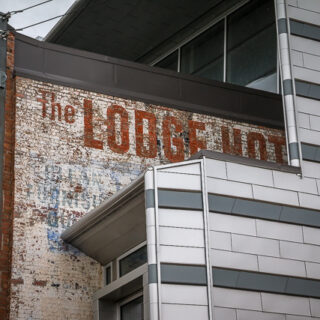
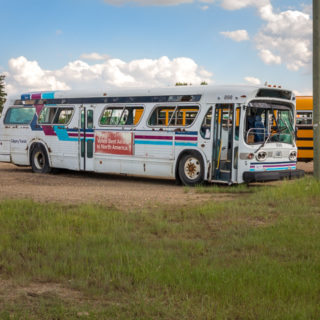
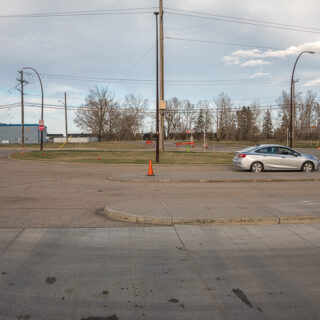
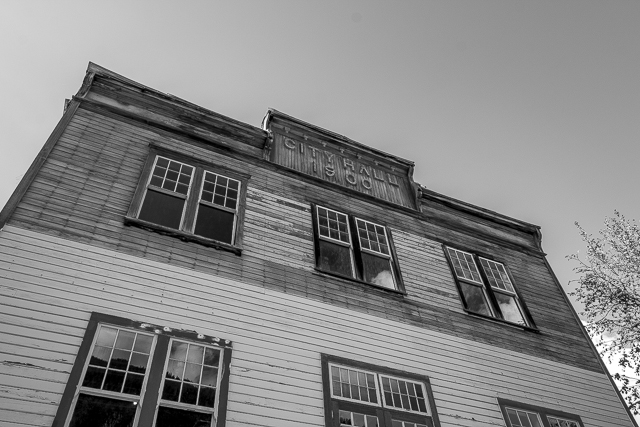
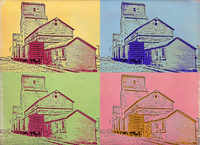






I’m amazed at how much the same it looks! The trees are huge.
They’ve really grown! Outside them, in this part of Edmonton, change has been slow.
I can’t get enough of these types of pictures!
Thank you, we’ll keep them coming! Been a bit sparse on them lately but have some good then and nows in the pipeline.
Interestingly the old buses area electric and the new ones diesel. Wouldn’t electric be cleaner?
In areas where hydro-power is readily available, yes. But other times, say with coal fired plants, perhaps no so much.
(via Facebook)
These past / present style shots are fantastic, and hard to replicate. Sometimes the landscape changes dramatically.
And in the case of these ones, it’s changed very little. It’s hit or miss however.
I grew up in the Parkdale district late ’40’s and ’50’s, the #5 and #7 were our favorited. I remember the tracks being removed (from the street cars) as the trolley busses started. A lot of track was left for years, just paved close. The story of power for the trolleys was that when going down through the river valleys, power was used by the busses going up the same hills. This should be verified. Thanks for the posting.
Glad we stirred some memories. I heard that some streetcar tracks were simply paved over and I wonder how many are left even today? I don’t believe the Edmonton Trolley Buses used regenerative braking. It certainly would have worked given the steep hills on each side of the North Saskatchewan. Even then however, the amount fed back into the line would be minimal. Have a good one,
Those trees grew real big over that time. Nice buses too.
They sure did and they sure are!
Shared in the Edmonton and District Historical Society newsletter. Good job!
Thank you!
Our trip to Edmonton was a blast!!
I am so glad to have you as a partner in these adventures.
I recall riding Edmonton’s trolley buses, back when fares were ten cents!. Those buses could accelerate like a rocket. And in winter they were a real adventure and they would often slide slip and dewire.
I remember ten cent fares! I once rode a Vancouver trolley bus during a winter storm. What a ride! The bus was slipping and sliding but managed to stay under the wires the whole time.
I’ve always been fascinated by these buses powered by overhead cables. On first look it really seemed like someone wanted to combine the disadvantages of streetcars (fixed track) with the disadvantages of buses (stuck in traffic). How were they a good idea?
Love your blog!
They do offer some advantages. For example, in Vanvouver they can use cheap hydro-sourced electricity to power the network. Also, when most trolley bus systems were put in place in the 1940s diesel buses were not always up to the task.